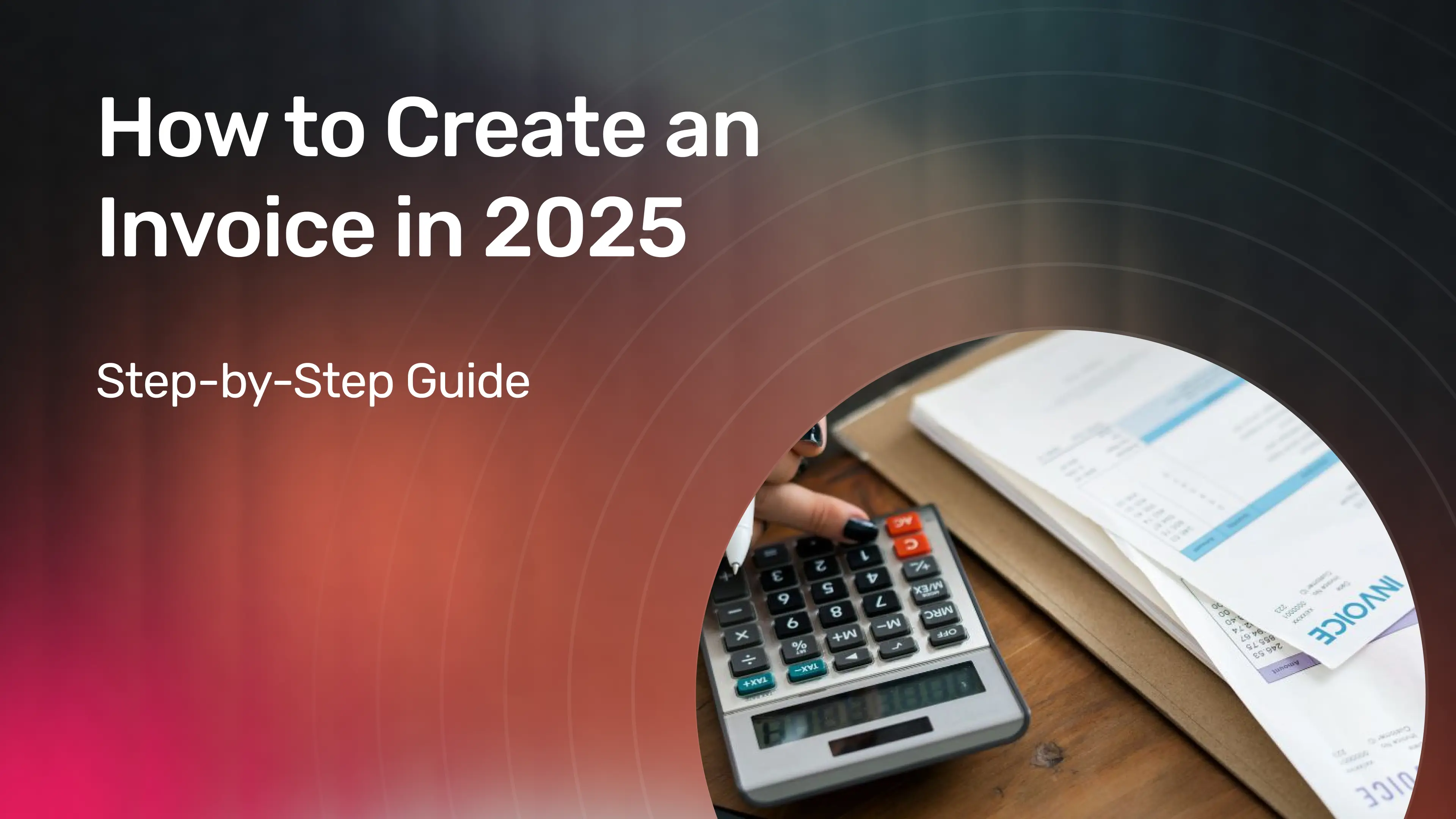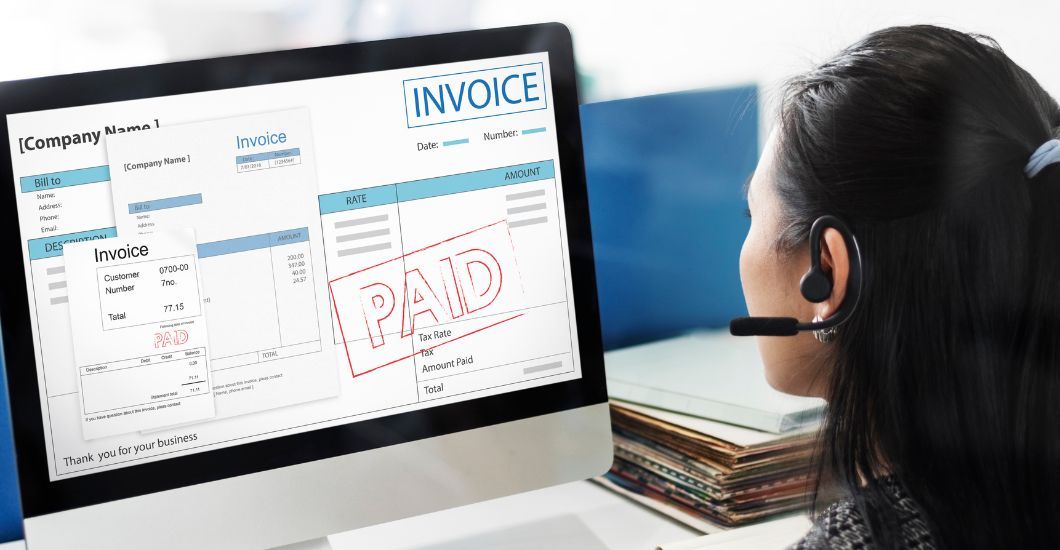How to Create an Invoice in 2025: Step-by-Step Guide
Whether you’re a freelancer, a remote worker, or a small business owner, invoicing is one of the most crucial parts of your work to keep your earnings steady and ensure your business remains financially healthy.
However, besides collecting your earnings, professional invoicing will also help you maintain your credibility and image with your clients, keep records of your earnings, and stay compliant with the applicable tax laws.
If you find yourself struggling to create a professional invoice, worry not. In this guide, you will learn how to create an invoice, including all of the important billing elements, the process of creation, and a few practical tips to help you invoice like a pro. Keep reading!

Essential elements of an invoice
Creating a clear and comprehensive invoice is important to ensure that you’re getting client payments timely and maintaining professional relationships. However, before you send your first invoice, it’s important to be familiar with the most essential elements, such as business information, description of services, and others.
If you want to learn how to create a professional invoice, make sure to watch our video, which explains the essential elements and provides a step-by-step breakdown of the process, or keep reading this practical guide.
Check out our video: How to Create an Invoice? (Two Different Methods and Free Template)
1. Header information
Starting from the header of your invoice, it serves as an introduction of your business, helping you establish your brand and provide essential contact information. Hence, it should contain your business name and logo, as well as information such as your business address, email address, phone number, and other details to help your clients get in touch with you.
2. Invoice number and date
After you fill in your header information, it’s also important to include an invoice number and invoicing date, typically in the right corner of the invoice.
The invoice number serves as a unique ID for your invoice, which is important for keeping accurate records, managing your invoices, and tracking your payments. Adding an accurate invoice date is also important, as it determines the invoice’s due date and also serves for accurate record-keeping and invoice management.
3. Client information
This section serves to fill in information about the individual or the company you’re invoicing. Hence, providing the name of the individual/business, along with the address, email, and phone number, will keep you ensured that your invoice reaches the right person and prevent delays in processing your payment.
4. Description of products or services
This section is reserved to ensure that you’re getting paid for the products or services you have provided. Hence, make a breakdown of the work for the specific client you’re billing, using a separate line for each service or product.
It’s also important to write descriptions and provide numbers, including the quantity or working hours, the price for each service or product, project milestones, or any applicable taxes.
5. Total amount due
After you provide detailed information about your products or services, the next section serves to summarise the invoice numbers. This typically includes the sum of the costs before taxation, applicable taxes or fees, and the total amount of the invoice with taxes and fees included.
6. Payment terms and due date
The payment terms section is used to provide any terms under which your payment is expected to arrive. This section should always include the due date of the payment, as well as other upon-agreed terms that will help you get your payment and manage your cash flow.
7. Payment methods
In this section, you’re expected to provide the payment methods your client can use to submit your payment. Hence, make sure to specify all the payment methods you accept, along with detailed instructions such as bank accounts and links for online transfers for each of them.

Step-by-step guide to creating an invoice
Once you get familiar with all the essential elements of a professional invoice, you can start billing your global clients. In the section below, we explore all the practical steps to help you create a professional invoice. Keep reading!
1. Choose an invoice template
The first step to creating a client invoice is selecting a professional and well-structured invoice template. While many invoice templates can be found online for free, it’s crucial to choose an option that includes all the necessary invoice information and presents them in a clear and straightforward way.
Check out Native Teams’ free invoice template to simplify your billing process and provide professional and clear invoices to your clients.
2. Fill in business and client details
After you select the right invoice template, make sure to fill out all the necessary fields, starting with your logo and business details and ending with the essential information for the invoice recipient. Ensure that your business and client details are accurate to avoid any confusion and payment delays.
3. Add products or services
Next, provide a detailed description of the products or services you’re billing for. It’s important to list everything you’ve provided, including detailed descriptions, quantities, and numbers of units. Don’t forget to include other relevant details, such as hours worked, project phases, or specific tasks that you’ve completed.
4. Calculate totals and taxes
After adding details about the provided services or products, the next step is to summarise the financial details so your client understands the total amount due. This includes the subtotal, which is the cost of all items or services before taxes, the applicable taxes and additional fees, and the total amount the client needs to pay, including taxes, fees, discounts, and other extras.
5. Set payment terms
Once you calculate the total amount, the next step is to specify terms or payments, as well as the due date, to inform the client when the payment is expected. Under this section, you should also provide the list of accepted payment methods, such as bank transfers, credit cards, PayPal, and others, and give detailed instructions for each method.
6. Review and send
Before sending your invoice to your client, make sure to review if the information is correct and complete. So, double-check and verify that the business and client information is accurate and that the product/service lists and totals are correct.
Finally, you should also ensure that the invoice looks professional and clear and is free from errors that can delay your payment.

Tips for effective invoicing
Besides knowing how to create a professional invoice, it’s also important to follow a few simple practices to ensure a steady cash flow and positive client relationships. Here are a few practical tips to enhance your invoicing process.
Send invoices promptly
Sending your invoices promptly will ensure that your clients are aware of their financial obligations timely and ensure the likelihood of payment delays. Hence, it’s recommended that you send your invoices as soon as your work is completed or the product is delivered to your client.
Use professional language
Professional communication will foster confidence and trust in your business, so it’s important to maintain a professional tone and concise language in your invoices. This includes clearly stating the details of your products or services, the payment terms, and the due date, which will help you avoid misunderstandings and get your payments promptly.
Set payment terms
Outlining payment terms will help you collect your earnings without significant payment delays. Hence, each invoice should contain the due date and the accepted payment methods to ensure that your clients are well informed about each payment detail.
In addition to this, it’s recommended to include fees for late-payments and discounts for early payments to incentivise your clients and avoid delays.
Keep records of sent invoices
Keeping detailed records will help you track outstanding payments and maintain accurate financial records for tax purposes. For this reason, it’s important to maintain organised documentation of all invoices and payments, including invoice numbers, dates, amounts, and payment statuses.
Follow up on overdue payments
In the case of overdue payments, it’s important to follow up with clients. This can be done through friendly reminders, follow-up emails, or any other form of communication to remind them of their outstanding invoices and inquire about payment status.
Use invoicing tools
Utilising invoicing software and tools will allow you to create professional-looking invoices, track payments, and send automated reminders. These tools are created to help you simplify your invoicing process, automate repetitive tasks, and save you time for billing for your work.
If you’re looking for a simplified tool that will help you automate invoicing and bill clients without opening your own company, check out Native Teams’ Client Invoicing tool.

How to create an invoice for free?
If you’re looking for a tool that will help you create professional invoices for free, there are many available options online, offering advanced functionalities and tools for simplified invoicing. Let’s explore some of the most popular options for creating professional invoices.
I. Microsoft Word
Microsoft Word is one of the most popular tools for creating a professional invoice. With its very simple and user-friendly interface, this tool can be very helpful for users of all skill levels.
Besides simplicity, Microsoft Word also provides a wide range of invoice templates that can be easily customised with your logo, business information, and invoice details. These templates also offer basic functions so that you can perform simple calculations such as subtotals and totals.
II. Microsoft Excel
Compared to Microsoft Word, Microsoft Excel offers more advanced functions to perform more complex calculations, such as totals, taxes, discounts, and other important numbers. It’s also equipped with extensive formatting options to help you customise the appearance of your invoice and create a professional-looking document for your clients.
In addition to this, Excel enables you to format and organise your invoice data which helps you track payments, analyse data, and generate reports. However, this makes the tool a bit more complicated to use and more suitable for advanced users.
III. Google Docs
Google Docs is a cloud-based platform where you can create and access invoices, facilitate real-time collaboration, and enable multiple users to work on the same document at the same time.
One of the greatest advantages of this cloud-based tool is that the invoices are automatically saved to your Google Drive, which ensures easy access and simplifies the record-keeping process. In addition to this, Google Docs offers a variety of simple templates to choose from, making it a very straightforward option for users who are looking for a practical yet professional invoicing tool.
Common mistakes to avoid
As the invoicing process is the foundation of collecting your earnings timely, it’s of great importance to pay attention to precision, clear details, and communication. Below, we discuss the most common mistakes that can occur while invoicing and how to avoid costly errors and delayed payments.
→ Incomplete or inaccurate information
One of the most common mistakes while invoicing is failing to provide complete and accurate information. Missing out on important details, such as your business name, contact information, invoice number, due date, and payment terms, can lead to confusion and delay your payments. Hence, it’s always recommended to double-check all the information before sending out invoices.
→ Incorrect calculations
Math errors when calculating subtotals, totals, taxes, and discounts can lead to discrepancies and payment disputes. To avoid this, it’s recommended to use spreadsheet software or invoicing tools with built-in calculation functions to help you minimise errors and ensure accurate totals.
→ Poorly organised records
Failing to maintain organised tracking of sent invoices, received payments, and outstanding balances can lead to confusion and difficulty tracking your payments and earnings. To avoid poor organisations, many professionals rely on online tools, platforms, and cloud-based software, which is also useful for effective cash flow management and financial reporting.
→ Ignoring late payments
Allowing overdue invoices to go unaddressed doesn’t only strain your cash flow but can also hinder your professional relationships with clients. This is why it’s important to have a proactive approach to managing late payments, which includes sending reminders, promptly following up with clients, and even including late payment fees.
→ Using inconsistent branding
Inconsistency in branding across invoices, such as using different logos and versatile formatting styles, can hinder your professional appearance and credibility. To avoid this, it’s important to stick to consistent branding, such as using a standard template that contains your logo and consistent formatting and style to strengthen your brand and build a professional image.
→ Ignoring feedback from clients
Disregarding feedback and complaints from clients about your invoices or billing practices can damage your client relationship and harm your professional reputation. Listening to client feedback and addressing concerns promptly is important to demonstrate your responsiveness and commitment to your client’s satisfaction.

To sum up
Perfecting the skill of creating a professional invoice is essential for collecting your hard-earned money. It’s also a tool to showcase your professionalism and build long-lasting relationships with your clients.
By following our simple and practical guide, you can ensure that your invoices look sleek and professional, containing all the necessary details for accurate billing, prompt payments, and strong client relationships.
FAQs
How do I make an invoice for the first time?
Include your name, client info, invoice number, date, service details, payment terms, and total. Use a simple template or spreadsheet to keep it clean and professional.
How do I create a PDF invoice?
Use Word, Excel, or Google Docs to build your invoice. Once done, export or “Save As” PDF to lock formatting and make it easier to send to your client via email.
How to create an invoice in Word?
Open a blank Word doc or use a template. Add your contact details, client info, itemized list, pricing, and totals. Save the file and export as PDF when done.
Can Excel generate invoices?
Yes, Excel is great for invoices. Use formulas to auto-calculate totals. Start with a blank sheet or use a built-in invoice template from the Excel gallery.
